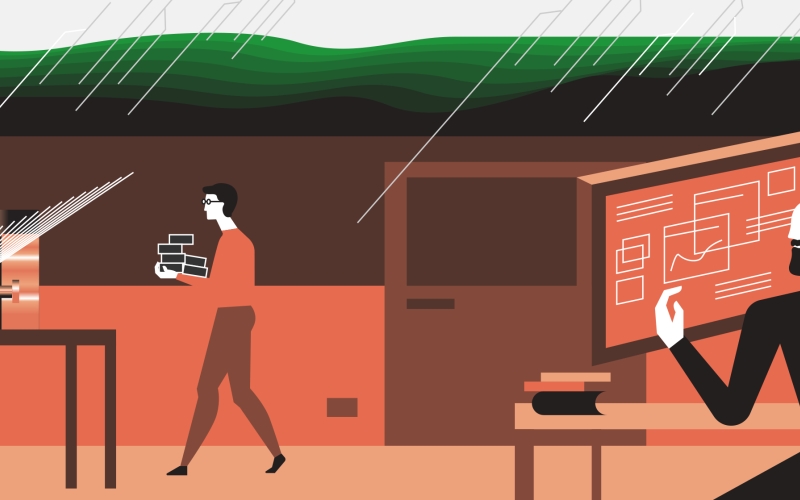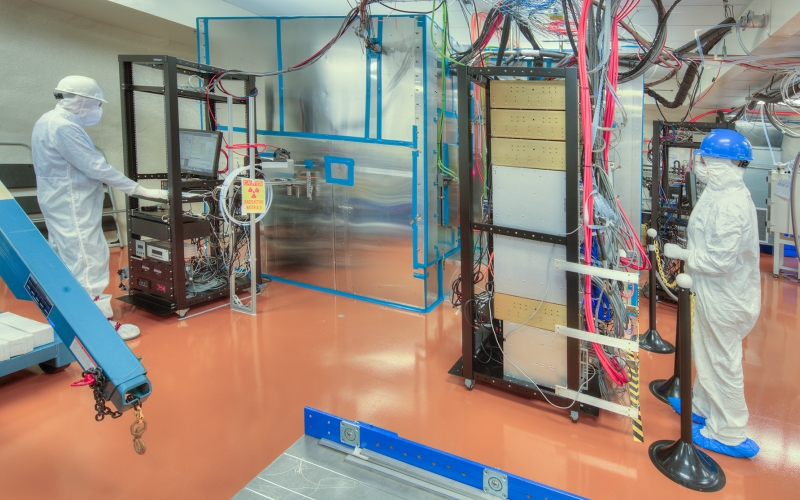
At Sanford Underground Research Facility, we talk a lot about cosmic rays and the need to escape them—not because they are harmful to humans, but because they create background noise in sensitive physics experiments that are seeking very rare physics events.
So, what are cosmic rays, exactly, and why the need to escape them?
Cosmic rays were first discovered in August 1912 by Austrian physicist Victor Hess on an historic balloon flight. As Hess ascended 5,300 meters, he measured the rate of ionization in the earth’s atmosphere, finding it increased by three times the amount at sea level.
The term ‘cosmic rays’ is a misnomer. They’re really particles—mostly protons—that hurtle through space at nearly the speed of light. When they arrive at our little rock, they collide with the nuclei of other atoms in the upper atmosphere, creating even more particles that then shower the earth (one or two pass through your hand unimpeded every second). To escape these ubiquitous particles, researchers build physics experiments deep underground.
At Sanford Lab, the rock overburden stops most of the cosmic radiation before it reaches the experiments on the 4850 Level. Still, LUX-ZEPLIN (LZ), which is searching for dark matter, and the MAJORANA DEMONSTRATOR, which seeks to better understand the properties of neutrinos, build additional shielding to block out the rest.
In a 2017 paper, MAJORANA reported that the depth of the experiment in conjunction with its extraordinary shielding efforts had paid off.
“We know that we created an environment that is incredibly clean and quiet,” said Vincente Guiseppe, co-spokesperson with MAJORANA. “Our initial results give us a better understanding of the always-elusive neutrino and how it shaped the universe.”
But some researchers don’t want to avoid cosmic rays—they want to understand them. According to NASA, understanding the chemical composition of cosmic rays is important because they are direct samples of matter from outside the solar system and contain rare elements and they can provide important information on the chemical evolution of the universe.
Dr. Mike Cherry, the Roy P. Daniels Professor of Physics at Louisiana State University, studied very energetic cosmic rays nearly a mile underground at the Homestake Mine (now the Sanford Underground Research Facility) in Lead, South Dakota, from 1980 to 1988.
“We wanted to find out the source of these rare, very energetic cosmic events,” Cherry said. “High-energy cosmic rays are the rarest form and could come from exploding stars, which may also emit gamma-ray bursts.”
Cherry installed the Large Area Scintillation Detector (LASD)—an array of 200 one-foot square plastic pipes welded together and stacked around Ray Davis’ solar neutrino tank. The pipes contained ultra-pure mineral oil and had sensitive light detectors on each end. In conjunction with an array of air shower detectors on the surface, Cherry hoped to draw a line between cosmic ray events on the surface and underground. He continues to do research in the field.
A Black Hills cosmic connection
Balloon flights from the 1930s through the mid-1960s—some of which took place from the Stratobowl in the Black Hills of South Dakota—continued to measure both high- and low-energy cosmic radiation. The flights also gathered meteorological and other scientific data necessary to improve safety at high altitudes.


